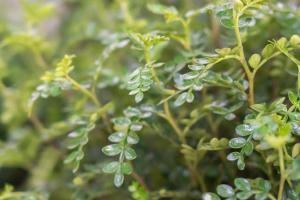Can You Use Topsoil for Potted Plants?
When it comes to growing healthy and lush potted plants, one of the most crucial factors that gardeners need to consider is the type of soil that they are using. While many people may assume that topsoil would be a great option for potted plants, the truth is that this type of soil may not be the best choice for your indoor garden. In this article, we will explore the pros and cons of using topsoil for potted plants, and why you may want to consider other options instead.
The Pros of Using Topsoil for Potted Plants
There are a few potential benefits to using topsoil in your potted plants. For one, topsoil is typically rich in organic matter, which can be helpful in promoting healthy plant growth. Additionally, topsoil often contains a mix of sand, silt, and clay, which can help with soil drainage and water retention. Finally, topsoil is often readily available and affordable, making it a popular choice for many gardeners.
The Cons of Using Topsoil for Potted Plants
Despite these potential benefits, there are a few significant downsides to using topsoil in potted plants. First, topsoil can be heavy and dense, which can make it difficult for water to penetrate and for the plants to absorb nutrients. Additionally, topsoil may contain weed seeds, pests, or disease organisms, which can harm your plants. Finally, topsoil does not provide adequate drainage for potted plants, which can lead to root rot and other issues.
Better Alternatives to Topsoil for Potted Plants
If you want to ensure that your potted plants thrive, it is generally better to avoid using topsoil and to opt for a more suitable soil mixture instead. Here are a few alternatives that you may want to consider:
Potting Soil: Potting soil is specially designed for use in containers and generally contains a mix of peat moss, perlite, and vermiculite. This type of soil is lightweight and provides excellent drainage, making it a great choice for most potted plants.
Cactus and Succulent Soil: If you are growing cacti or succulents, you may want to opt for a specialized soil blend made specifically for these plants. Cactus and succulent soil typically contains sand, gravel, and perlite, which help to mimic the plants' natural environment.
Compost: If you are looking for an organic alternative to traditional potting soil, you may want to consider using compost instead. Compost is rich in nutrients and beneficial microorganisms, which can help to promote healthy plant growth. However, compost can be heavy, so you may want to mix it with perlite or vermiculite to improve drainage.
Final Thoughts: Is Topsoil Suitable for Potted Plants?
While topsoil may seem like a convenient and affordable option for potted plants, it is generally not the best choice for a few reasons. Topsoil can be heavy and dense, which can make it difficult for water and nutrients to penetrate the soil. Additionally, topsoil may contain pests, weed seeds, or disease organisms that can harm your plants. If you want to ensure that your potted plants thrive, it is generally better to opt for a suitable soil mixture like potting soil, cactus and succulent soil, or compost. By choosing the right type of soil, you can help your plants to grow healthy and strong for years to come.

 how many times do yo...
how many times do yo... how many planted tre...
how many planted tre... how many pine trees ...
how many pine trees ... how many pecan trees...
how many pecan trees... how many plants comp...
how many plants comp... how many plants can ...
how many plants can ... how many plants and ...
how many plants and ... how many pepper plan...
how many pepper plan...
































